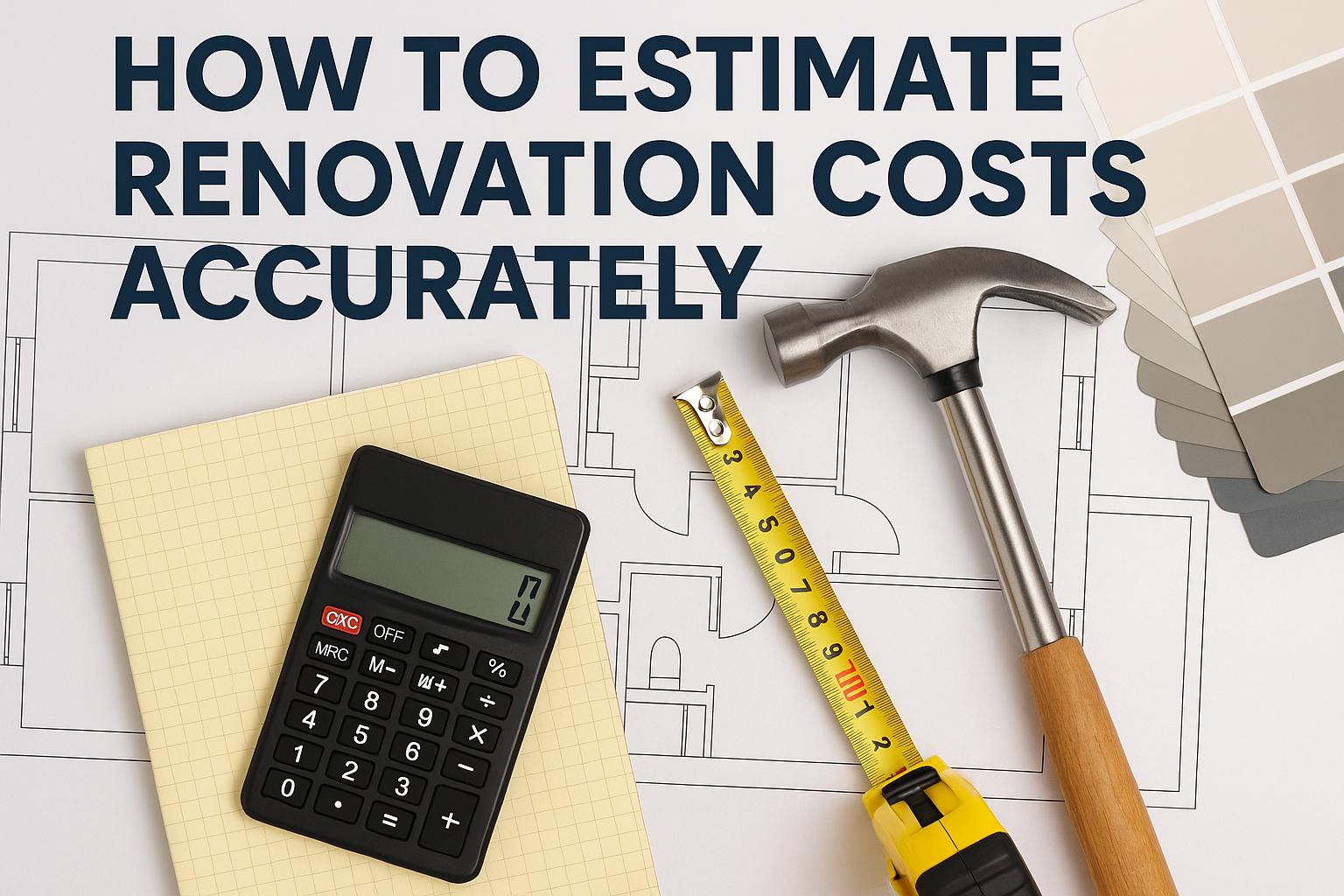
Accurately estimating renovation costs is fundamentally anchored in a clear understanding of the project’s scope. Identifying the extent of the renovation is a decisive preliminary step. This understanding not only informs the renovation’s scale but also sets a roadmap for the entire process. Determining whether the project involves a minor upgrade or a major overhaul is crucial. For example, in a kitchen renovation, a minor upgrade might include tasks like repainting walls and replacing cabinet handles, whereas a more substantial renovation could involve structural changes, replacing all cabinetry, or upgrading to high-end appliances. Documenting every minute detail is imperative to provide a comprehensive overview of the expected tasks and helps in formulating a precise cost estimation. This document becomes a reference point throughout the renovation process, reducing the scope for misunderstandings or oversight.
An essential step in estimating renovation costs with accuracy is conducting thorough research into current market prices for materials and labor. Knowing the prices of necessary materials such as fixtures, appliances, paint, and tiles is crucial. This involves contacting multiple suppliers to receive comparative quotes, which will help in securing the most cost-effective deals. The variation in labor costs, based on geographical location and the skill level required, underscores the importance of obtaining multiple quotes from different contractors. A meticulous comparison allows broader insight into cost-saving opportunities without compromising on quality. Additionally, being aware of seasonal fluctuations and market trends can also guide your purchasing strategies, strategically timing procurements when prices are favorable.
Engaging professionals, including architects, interior designers, and surveyors, can provide significant assistance in estimating renovation costs. These professionals offer valuable insights, drawing from their expertise and experience to provide detailed and realistic plans. This input drastically reduces the risk of unforeseen expenses that often cause budget overruns. When selecting a contractor, it is wise to request a comprehensive quote encompassing labor costs, material expenses, and any other additional charges that may arise. A dependable contractor will effectively manage the budget, addressing potential issues early in the process to prevent them from ballooning into costlier problems down the line. Professional advice ensures that the project is not only aesthetically pleasing and functional but also financially viable.
Allocating a contingency buffer remains a vital part of estimating renovation costs. Despite thorough planning and preparation, unforeseen expenses can emerge, such as structural issues, sudden design changes, or material shortages due to unforeseen demands in the market. Allocating 10-20% of the total budget as a contingency reserve is a prudent approach. This buffer acts as a financial cushion, absorbing unexpected expenses without jeopardizing the entire renovation budget. Such foresight prevents encountering financial strain, ensuring that the project continues smoothly without unpleasant disruptions or compromises.
For homeowners seeking additional guidance, various software tools and online calculators are available to aid in more precise estimation of renovation costs. These tools often feature detailed breakdowns of expenses related to different renovation aspects, giving users a clearer picture of where their money will be allocated. However, while these tools are undoubtedly beneficial, they should complement rather than replace professional advice and cost assessments. They serve as excellent resources in cross-verifying estimates obtained from professionals or personal calculations, ensuring a balanced and informed approach to budget estimation. For those unfamiliar with the nuances of renovation, these tools offer a starting point for financial planning and decision-making.
Renovation cost estimation is a multi-faceted task that calls for a methodical approach. Comprehensive understanding of the project scope ensures that no aspect is overlooked, laying a groundwork for accurate estimation. Extensive research into market prices for materials and labor enables practical budget planning. Engaging professionals furnishes a project with expertise and oversight, anticipating and mitigating potential issues. Factoring in a contingency buffer fortifies the budget against unforeseen expenses. Finally, utilizing estimation tools provides additional verification and insights. Taken together, these elements form a structured approach that is essential in achieving a more accurate and reliable renovation cost estimation. This approach not only keeps the project within budgetary constraints but also ensures that all stakeholders are on the same page, paving the way for an efficient and successful renovation project.
For further insights and detailed information on renovation cost estimation, exploring reputable online resources such as Houzz or consulting professional sites related to home renovation projects can be highly beneficial. These resources can offer additional tips, trends, and expert opinions, further enriching the planning and execution of your renovation project.
Comments are currently closed.